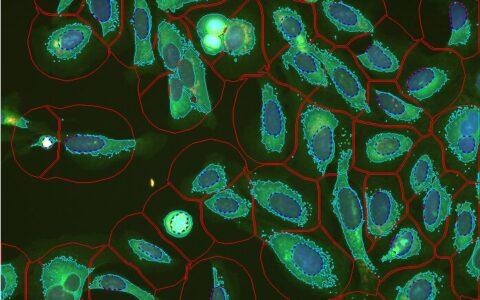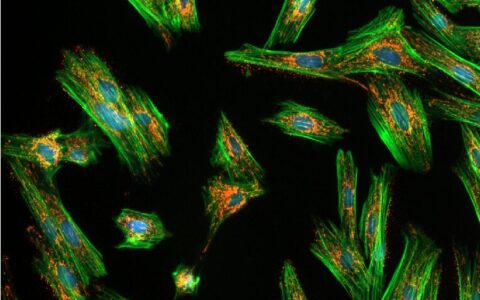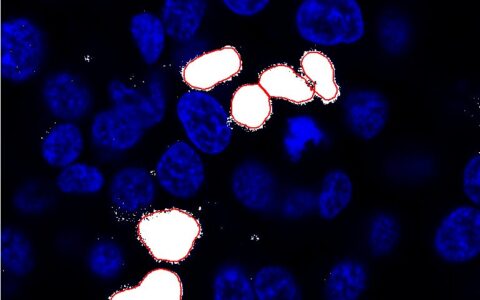Cytoplasm-Nucleus
Translocation
Eukaryotic cells have a double membrane-bound nucleus, the Nuclear Envelope (NE), which separates genetic material from the cytoplasm. Nuclear pore complexes (NPCs) enable the active transport of proteins and molecules between the two compartments, regulating key cellular processes (Görlich, 1998; Tijana & Anton, 2017).
The distribution of proteins between the nucleus and cytoplasm is critical for understanding cell functions and disease states. The Image-Pro Translocation protocol simplifies this by providing nuclear-to-cytoplasmic fluorescence ratios and other compartment-specific measurements. Compatible with pre-trained deep learning models, it enables high-throughput analysis of complex datasets, such as multi-well plates, with minimal image analysis expertise.
Techniques: Fluorescence
How it works
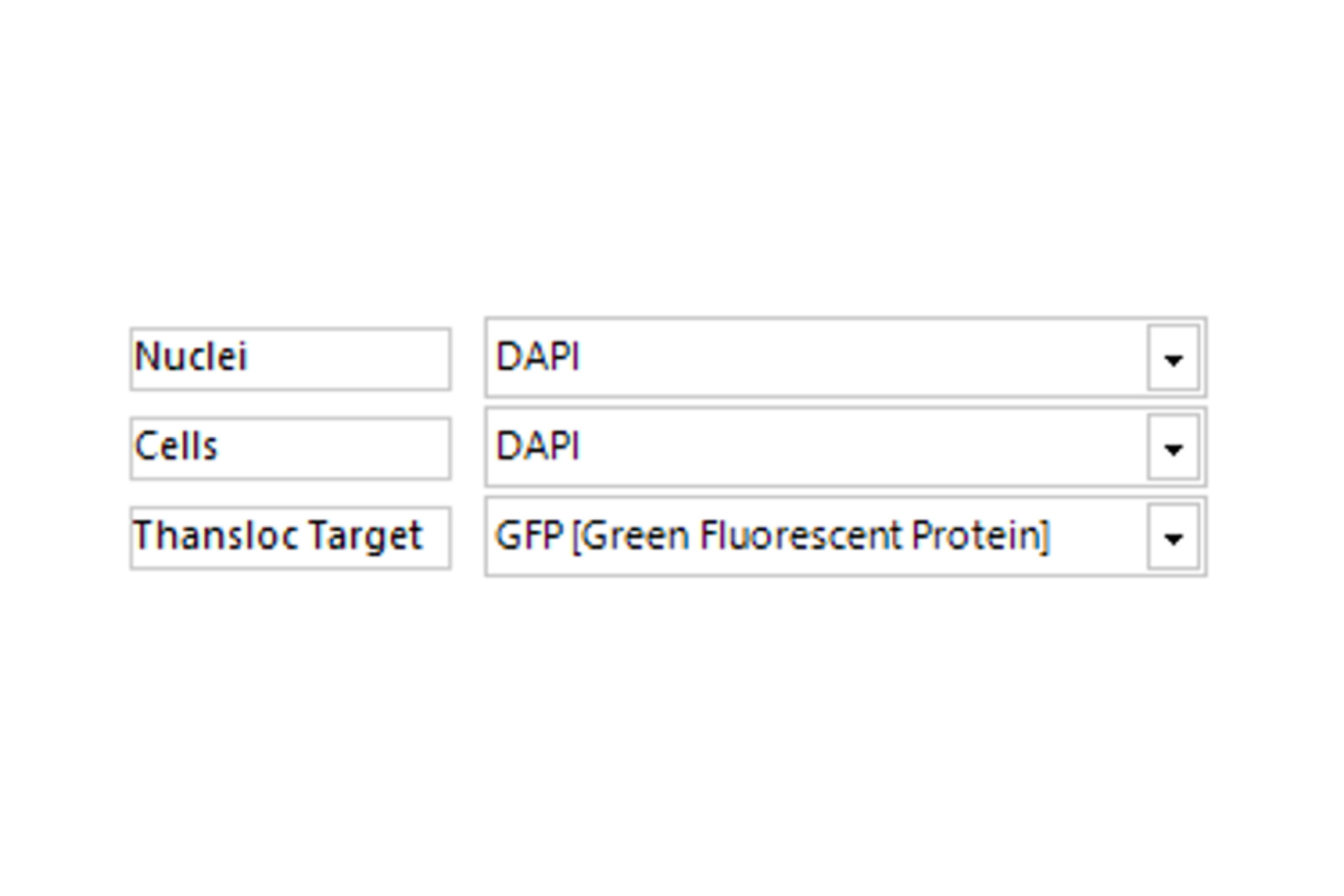
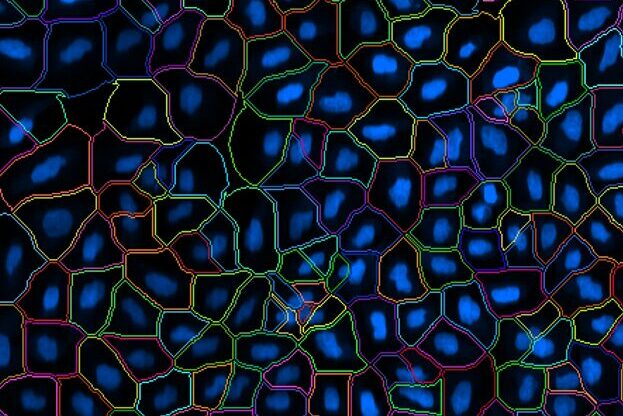
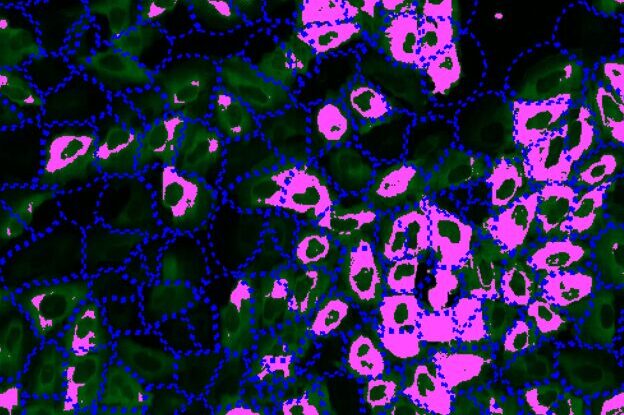
Select Channel
Select the channels that contain labeled nuclei, cells, and the translocation target.
Find Cells & Nuclei
Find cells and nuclei with a pre-trained deep learning model, machine learning, or threshold segmentation.
Separate from Background
Separate the translocation target from the background with either threshold segmentation or machine learning.
Quantitative results
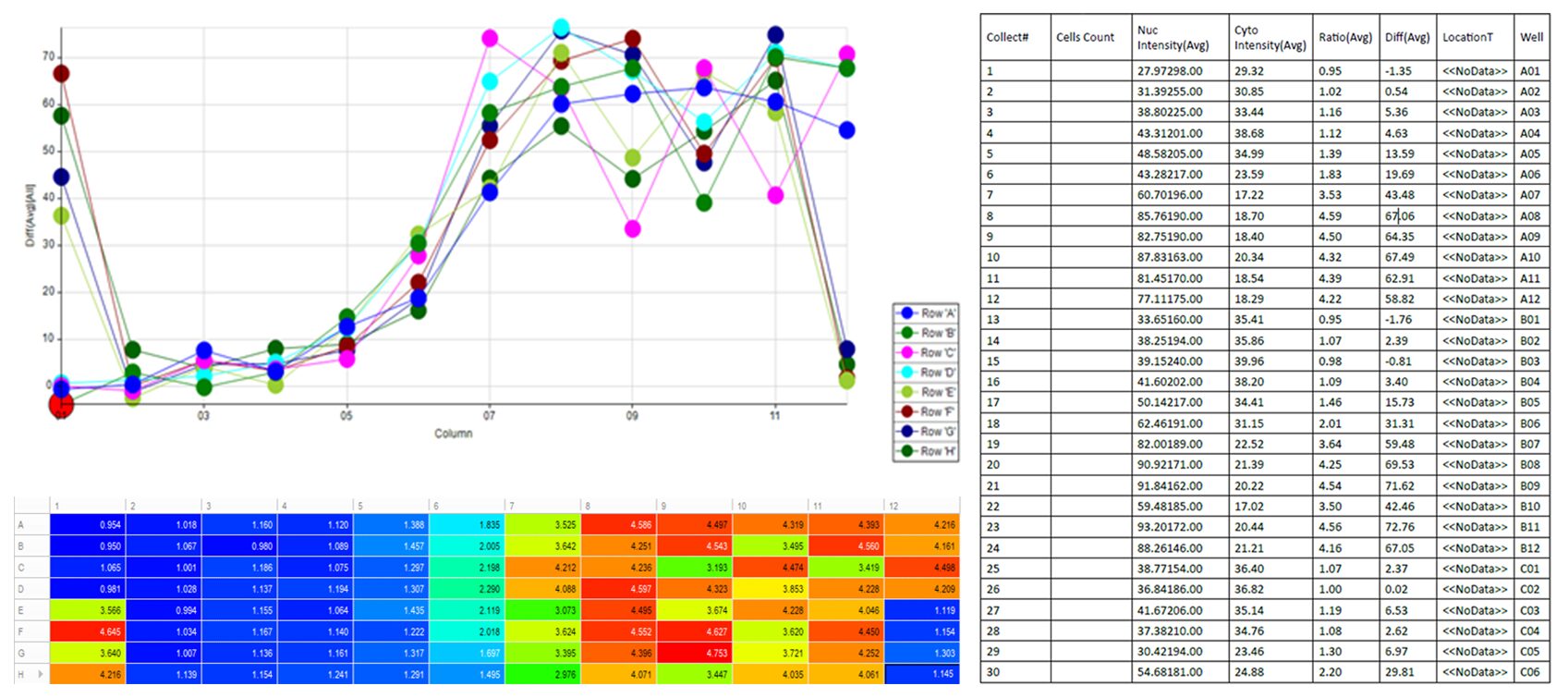
Automatically generate tables, heat maps, charts and even complex bespoke reports.
Measurement parameters supported
- • Cytoplasmic Intensity
- • Nuclear Intensity
- • Nuclear/Cytoplasmic Difference in Intensity
- • Nuclear/Cytoplasmic Intensity Ration
- • Custom user-defined measurements
Solution requirements
Required Modules
Base
2D Automated Analysis
Cell Biology Protocol Collection
Translocation Protocol
AI Deep Learning
Life Science Models
Fluorescent Nuclei Model
Recommended Package
Literature spotlight
- Hu, W., Chen, M., Wang, W., Huang, F., Tian, X., & Xie, L. (2022). Pomelo Peel Essential Oil Ameliorates Cerebral Ischemia‐Reperfusion Injury through Regulating Redox Homeostasis in Rats and SH‐SY5Y Cells. Oxidative medicine and cellular longevity, 2022(1), 8279851.
- Xia, Q., Mao, M., Zeng, Z., Luo, Z., Zhao, Y., Shi, J., & Li, X. (2021). Inhibition of SENP6 restrains cerebral ischemia-reperfusion injury by regulating Annexin-A1 nuclear translocation-associated neuronal apoptosis. Theranostics, 11(15), 7450.
- Sebastian, J. A., Moore, M. J., Berndl, E. S., & Kolios, M. C. (2021). An image-based flow cytometric approach to the assessment of the nucleus-to-cytoplasm ratio. PLoS One, 16(6), e0253439.

